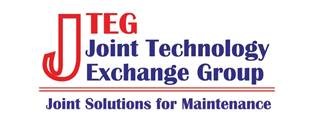
Finding and identifying hidden flaws in a structure or damage often requires the ability to see through an object or under coating layers. Applications include weld inspection, fatigue crack detection, corrosion detection, bond quality, hidden damage, delamination, and voids. NDI needs are pervasive and cross-service, being required in a cross section of ships, airplanes and ground systems. This technology forum will discuss multiple NDI technologies, novel applications, and emerging trends.
JTEG Forum Minutes
Event: On 29 August, 2017, the Joint Technology Exchange Group (JTEG), in coordination with the National Center for Manufacturing Sciences (NCMS), hosted a virtual forum on “Non-Destructive Inspection (NDI)”.
Purpose: The purpose of this forum was to discuss multiple NDI technologies, novel applications, and emerging trends.
Welcome: Greg Kilchenstein (OSD) welcomed everyone to the forum, thanked the presenters and all the listeners for their attendance, and briefly previewed the agenda.
Administrative: This was an open forum. The presentations, along with questions and answers, were conducted through Adobe Connect. A separate audio line was used. Approximately 45-50 participants from across DOD and industry joined in the forum.
Large-Standoff Large-Area Thermography (LASLAT) – Maria Beemer (Thermal Wave) discussed the challenge of performing NDI on large scale composite structures, and how LASLAT deals with the complexities of composite aircraft inspection, and performs fast, 100% area inspection of large aircraft structures by using deviations from predicted surface cooling behavior to indicate the presence of a subsurface feature. She described the implementation of LASLAT to include the equipment and the minimum flaw size detectable, and described several examples of LASLAT use in NAVAIR applications.
Advanced Automatic Gas Turbine Airfoil Inspection – Joe Bioty (API) described an API and FRCE-Cherry Point initiative to develop a One-Cell-Solution that provides a semi-automated, non-contact, blade inspection process that encompasses next generation NDI SENSING TECHNOLOGY – Time-to-Spectrum-Mapping-Interferometry (TSMI). When completed, the next generation NDI sensor technology (TSMI) will be packaged into a commercial application with unique capabilities, an NDI non-contact, high precision, turn-key inspection cell will be completed at the Cherry Point facility, and a baseline will be created for T64 rotor compressor blades having dimensional / surface finish data to begin developing condition based modeling (CBM) for any size rotor blade.
Phased Array Ultrasonics and Computed Radiography – Jason Hence (NAVSEA) described several NAVSEA non-destructive testing efforts to include the NAVSEA NDT Working Group, which meets annually, Phased Array Ultrasonic Testing (PAUT) / Time of Flight Diffraction (ToFD) which has been partially approved, Computed Radiography (CR) which has a requirements document drafted, and Terahertz Imaging which is still in the research and development phase.
NDI Cell at Hill AFB – Ward Fong (NDI Program Mgr) provided an overview of the NDI Program Office and NDI Operations at OO-ALC. Responsibilities include NDI program management and on-site/off-site technical support. He also described several OO-ALC NDI processes to include shearography, computed tomography, and conformal eddy current probe development, and identified some NDI technology opportunities involving partnering with industry, including a large scale robotic NDI system with the capability as a “one stop shop” for NDI.
AMRDEC NDI Updates – Sean Gnehm (AMRDEC) listed the services provided by the Army’s Nondestructive Testing Center of Excellence, and stated that in the field, Army Aviation uses the four basic portable NDT methodologies (ET, UT, MT, PT), while the depot has more advanced methodologies such as Digital Radiography (DR) and automated Eddy Current Testing (ET) for specific engine components. He mentioned they are interested in evaluating and pursuing NDT solutions to improve their inspection capabilities (both in the field and at the depot) and reduce the impact of unnecessary maintenance and part replacement. Additionally, wide field of view technologies (both infrared thermography and shearography) are of interest as well as Condition Based Maintenance (CBM) concepts.
Closing Comments: Greg Kilchenstein thanked the presenters for their contributions and the audience for their participation. He suggested continuing the information exchange beyond the forum and the importance of teaming/partnership to the DoD maintenance community.
Action Items:
- Obtain “public release” versions of the presentations and post to the JTEG website. These meeting minutes, the Q&A, and those briefing slides approved for public release, will be posted on the JTEG website at https://jteg.ncms.org/ . (All presenters, LMI, NCMS)
Next JTEG Meeting: The next JTEG virtual forum is 26 September, 1:00 – 3:00 pm EST. The topic is “Laser De-Paint / Automated Painting & De-Painting”.
POC this action is Ray Langlais, rlanglais@lmi.org , (571) 633-8019
Forum Q&A
Large-Standoff Large-Area Thermography (LASLAT) – Maria Beemer (Thermal Wave)
————————–
Q1. Is the stand-off distance a critical factor, how accurate must it be?
A1. 10–15 ft. We use a laser range system. The System determines the range itself.
Q2. Have you used this method on a metal sandwich composite?
A2. Yes, we have. We discuss the details off-line.
Q3. Question about the projectors — Why two? For power or for symmetry?
A3. For power
Q4. Max incidence angle?
A4. The maximum incidence angle is 30 degrees.
Advanced Automatic Gas Turbine Airfoil Inspection – Joe Bioty (API)
————————–
No Questions
Phased Array Ultrasonics and Computed Radiography – Jason Hence (NAVSEA)
————————–
Q1. Was the determination to allow the use of Phased Array Ultrasonic Testing (PAUT) and Time of Flight Diffraction (TOFD) based on any POD (Probability of Detection) Studies?
A1. Oh, yes. There was lots of R&D performed and side by side evaluations.
NDI Cell at Hill AFB – Mr. Ward Fong (NDI Program Mgr)
————————–
Q1. Does large data track by fleet or individual airframe or both?
A1. Both
Q2. Does the large scale robotic NDI effort leverage the automated paint stripping hangar?
A2. We have been in discussions to do so. Not a ton of success as of yet. It is definitely a focus for the future.
AMRDEC NDI Updates – Sean Gnehm (AMRDEC)
————————–
No Questions
Downloads
